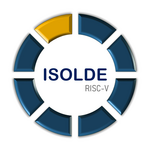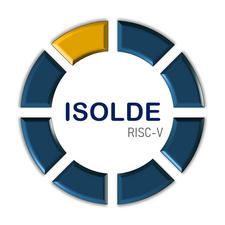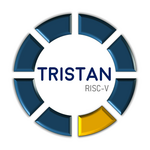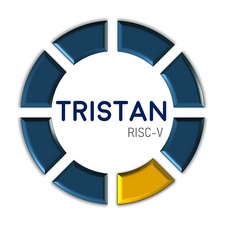
Project: HASELNUSS

Hardware-basierte Sicherheitsplattform für Eisenbahn-Leit- und Sicherungstechnik
(Hardware-based Safety platform for Railway control and Safety technology)
The aim of the project HASELNUSS is the development of a customized hardware-based security platform for railway command and control systems that provides required security functions without jeopardizing safety. The platform features provisions to ensure system integrity and constitutes a foundation for secure infrastructure networking. The HASELNUSS architecture is based on a hardware security module (HSM) of the latest generation, the Trusted Platform Module (TPM) 2.0, used as a trust anchor and microkernel-based operating system PikeOS that allows secure coexistence of critical and non-critical applications on the same hardware and can be easily verified.

Project: ISOLDE

ISOLDE Project will have high performance RISC-V processing systems and platforms at least at TRL 7 for the vast majority of building blocks, demonstrated for key European application domains such as automotive, space and IoT with the expectation that two years after completion ISOLDE’s high performance components will be used in industrial quality products.
Infineon Technologies AG
Am Campeon 1-15
85579 Neubiberg
Germany

Project: LoLiPoP IoT

Long-Life Power Platforms for Internet of Things
In LoLiPoP IoT innovative Long Life Power Platforms are developed that enable retrofit of wireless sensor network (WSN) In LoLiPoP IoT innovative Long Life Power Platforms are develloped that enable retrofit of wireless sensor network (WSN) modules in in IoT applications. They can be applied to APPLICATIONS of industry 4.0, smart mobility and building energy efficiency. Create an ecosystem of developers, integrators and users to develop these platforms thinking about power/battery life, ease of installation and maintenance.
COGNITECHNA s.r.o.
Karásek 2290/1m
621 00 Brno-Řečkovice
Czech Republic

Project: REBECCA KDT JU

Reconfigurable Heterogeneous Highly Parallel Processing Platform for safe and secure AI
The REBECCA project is an SME-driven initiative that aims to democratize the development of edge AI systems. It will create a complete hardware and software stack centered around a RISC-V CPU, which will offer significantly higher performance, energy efficiency, safety, and security than existing systems. This will be achieved by utilizing state-of-the-art technologies and making significant advances in processing units, hardware accelerators, reconfigurable hardware, and AI libraries and frameworks. The project will demonstrate its approach on four real-world use cases and two benchmarks from various domains. It will develop a novel chip comprising two tightly-coupled chiplets with features such as RISC-V multicore, Neuromorphic AI Accelerator, and Memory Encryption.

Project: SASVI

"Sicherheit auf allen Systemschichten durch Vertrauensketten und Isolierung"
(Security at all system layers through chains of trust and isolation)
The aim of the SASVI project is to create trust anchors, such as specific hardware modules or digital certificates, in all hardware and software components of an overall system. By connecting these anchors, the researchers want to demonstrably create security for the overall system. To this end, highly secure and trustworthy software and hardware components for the control, communication and operation of industrial IT systems and devices are to be developed and used throughout. These components should be isolated from each other in such a way that they cannot become a gateway to other components and system layers in the event of an attack. The resulting, consistently trustworthy overall system is then to be further researched, tested and evaluated on the basis of use cases. These cases are located, for example, in water supply and sewage disposal, i.e. in critical or sensitive infrastructures.
NXP SEMICONDUCTORS GERMANY GMBH
Troplowitzstrasse 20
22529 Hamburg
Germany

Project: SIL4onClouds

Today, the Railway system is facing one of the greatest technological leaps in its history: The digitization and networking of machines for Industry 4.0. The task of Digitalen Schiene Deutschland (DSD, Digital Rail Germany) is to consistently exploit the opportunities of digitization for Railway. DSD brings future technologies to the railway system. The use of digital technologies significantly increases the amount of data. In addition to rapidly clocked control information in the context of ETCS and ATO, the data collected by sensors and cameras in trains and on tracks must also be transmitted, processed and analysed in real-time in the future. Also required for the multitude of new technologies introduced is an IT-secure, scalable and future-proof data processing infrastructure.

Project: SIoT-Gateway

Secure Networking and IT Integration of Industrial Controllers
The increasing digitalization of automation applications enables comprehensive networking of machines, integrating them into the Industrial Internet of Things (IIoT). This connectivity enhances machine interaction and adaptability, forming the basis for intelligent industrial systems. Companies can leverage this to deploy AI applications on decentralized industrial controllers and link operational technology (OT) with information technology (IT), such as cloud services. However, IT integration raises Security risks, necessitating innovative solutions. The SIoT-Gateway project aims to develop a novel architecture for secure IT/OT interaction, tested across various industrial scenarios to ensure practical application and enhanced Security.

Project: Suzeck

Secure, Safe, Authorized & Certifiable Edge & Cloud Key Components
The networking of Safety-critical systems in the Rail sector, for example in signal processing in rail network or data processing in rail vehicles, requires the use of intelligent and therefore safe and functional connectivity platforms, such as Cloud services, among others. This is where the Suzeck project comes in by creating a Safe Computing Platform (SCP). A Platform-Independent Application Programming Interface (PI API) is planned between Safety-relevant areas in the Rail sector and Cloud and Edge applications. This creates a safety layer and supports portability between applications from different providers. The safe computing platform is supported by a functional open source reference implementation and other proprietary Safety adaptations. The project is based on the SCP PI standard, which was developed in collaboration with European railroads (Germany, France, Netherlands, Switzerland).

Project: TRISTAN

Together for RISc-V Technology and ApplicatioNs
TRISTAN aims to strengthen and industrialize the European RISC-V ecosystem as a competitive and sovereign alternative to existing commercial processors. The project will leverage Open Source development to enhance quality, productivity, and interoperability while reducing costs and avoiding vendor lock-in. It focuses on building a repository of industrial-grade components for SoC designs across domains like automotive and industrial, supported by both hardware (EDA tools) and full software stacks. With a broad consortium of 46 partners from industry, research, and academia, TRISTAN will expose many engineers to RISC-V, accelerating adoption. The 3-year initiative aligns with the EU’s goals of digital sovereignty and a green, digital future.
NXP SEMICONDUCTORS GERMANY GMBH
Troplowitzstrasse 20
22529 Hamburg
Germany
Wider Hardware Support
Enhanced range of supported drivers and hardware platforms
Rich Ecosystem of Guest Operating Systems
Greater flexibility and compatibility for mixed-criticality applications
Improved Tool Integration
Streamlined development workflows with better-aligned development tools


